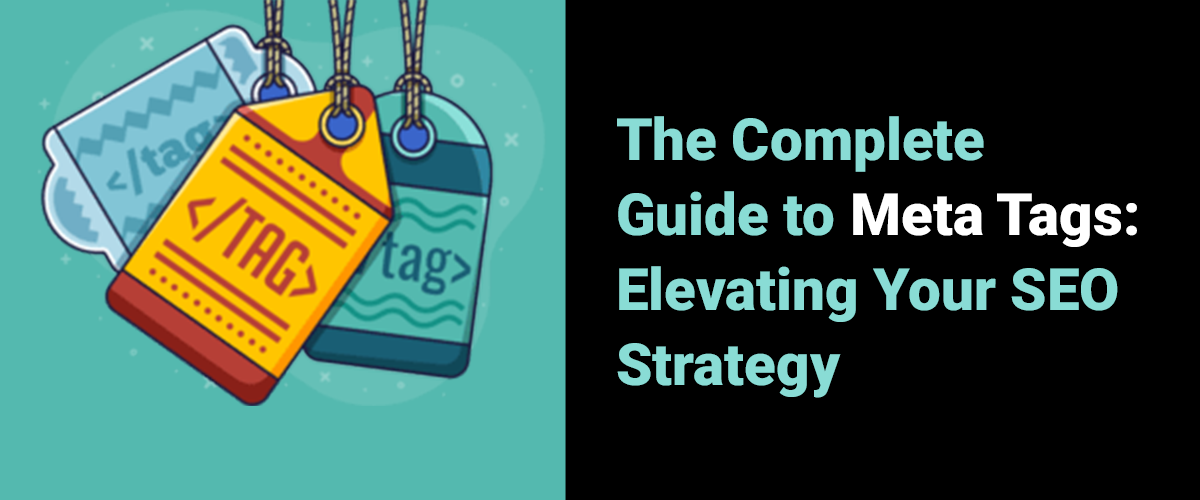In the ever-evolving landscape of Search Engine Optimization (SEO), mastering the usage of meta tags remains a cornerstone for enhancing a website’s visibility and relevance on search engine result pages (SERPs). Understanding various types of meta tags and their syntax is crucial for optimizing a website’s content for search engines. Let’s delve into the significance of different meta tags along with their syntax examples tailored for SEO success:
What are Meta Tags?
Meta tags are snippets of HTML code that provide valuable metadata about a web page to search engines. These tags aid search engines in understanding the content, context, and purpose of each page.
Key Meta Tags for SEO and Syntax Examples:
Title Tag (Meta Title):
Syntax Example: <title>Your Page Title</title>
Usage: Defines the title of the webpage displayed as the clickable headline on SERPs. Keep it concise, around 50-60 characters, and include primary keywords.
Meta Description Tag:
Syntax Example: <meta name=”description” content=”Your Page Description”>
Usage: Provides a brief, enticing description of the page content in SERPs. Limit it to 150-160 characters and write compelling, relevant descriptions to entice users to click.
Meta Keywords Tag:
Syntax Example: <meta name=”keywords” content=”Keyword1, Keyword2, Keyword3″>
Usage: Previously used to specify keywords but is disregarded by most search engines now due to spamming practices.
Meta Robots Tag:
Syntax Example: <meta name=”robots” content=”index, follow”>
Usage: Instructs search engine crawlers on indexing and crawling rules. Options include “index,” “follow,” “noindex,” “nofollow,” etc.
Canonical Tag (Rel=Canonical):
Syntax Example: <link rel=”canonical” href=”https://www.yourwebsite.com/canonical-page”>
Usage: Specifies the preferred URL for the same or similar content to avoid duplicate content issues.
Viewport Meta Tag:
Syntax Example: <meta name=”viewport” content=”width=device-width, initial-scale=1.0″>
Usage: Defines how the webpage is displayed on different devices, ensuring responsiveness and proper display.
Benefits of Optimizing Meta Tags for SEO:
Improved Click-Through Rates (CTRs): Engaging and relevant meta tags can increase user engagement and CTRs on SERPs.
Enhanced Relevance: Optimized meta tags help search engines better understand and rank content accurately.
Reduced Bounce Rates: Accurate and compelling descriptions reduce bounce rates by delivering what users expect.
Enhanced SERP Presentation: Clear and concise meta tags contribute to a more attractive and informative appearance in search results.
Best Practices for Meta Tags Optimization:
Keyword Relevance: Include relevant keywords naturally without overstuffing.
Unique and Compelling Content: Craft unique and compelling title and description tags for each page.
Optimal Length: Ensure title tags are within 50-60 characters and description tags within 150-160 characters.
Regular Review and Updates: Periodically review and update meta tags based on changes to content or SEO strategies.
Conclusion:
Mastering the usage of meta tags is a fundamental aspect of an effective SEO strategy. By strategically implementing and optimizing various meta tags with the correct syntax, website owners and marketers can significantly improve their website’s visibility, user engagement, and ultimately drive organic traffic through enhanced SERP performance.
Embrace the potential of meta tags as they serve as a powerful tool to communicate with search engines, elevating your website’s relevance and appeal in the competitive digital landscape.



